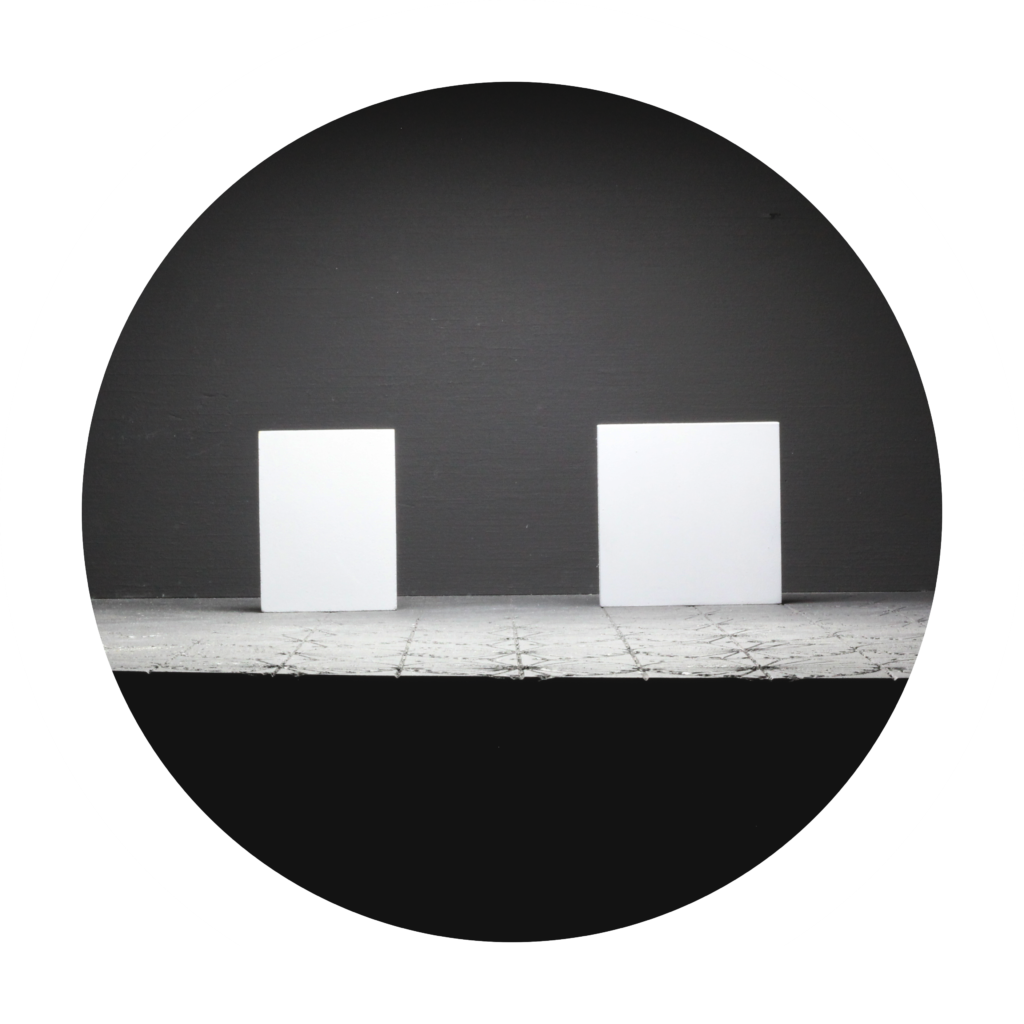
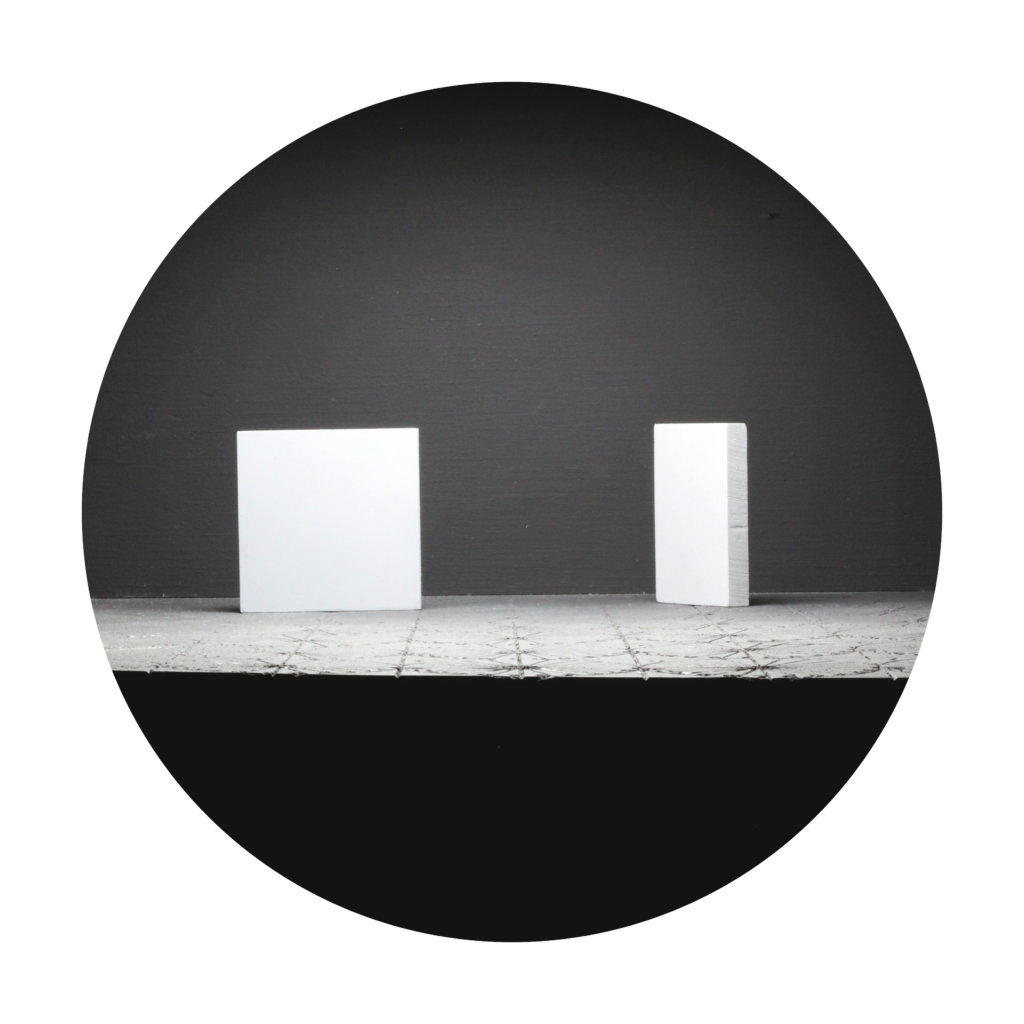
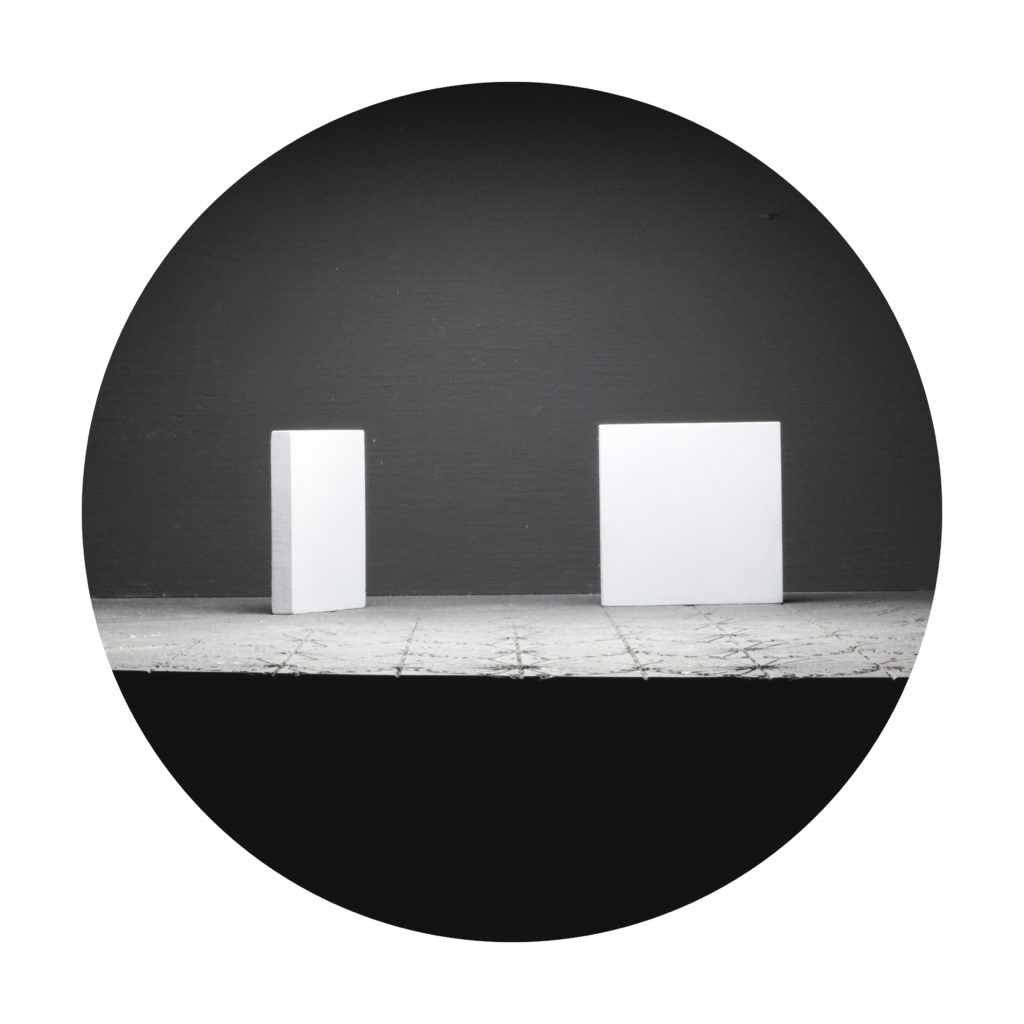
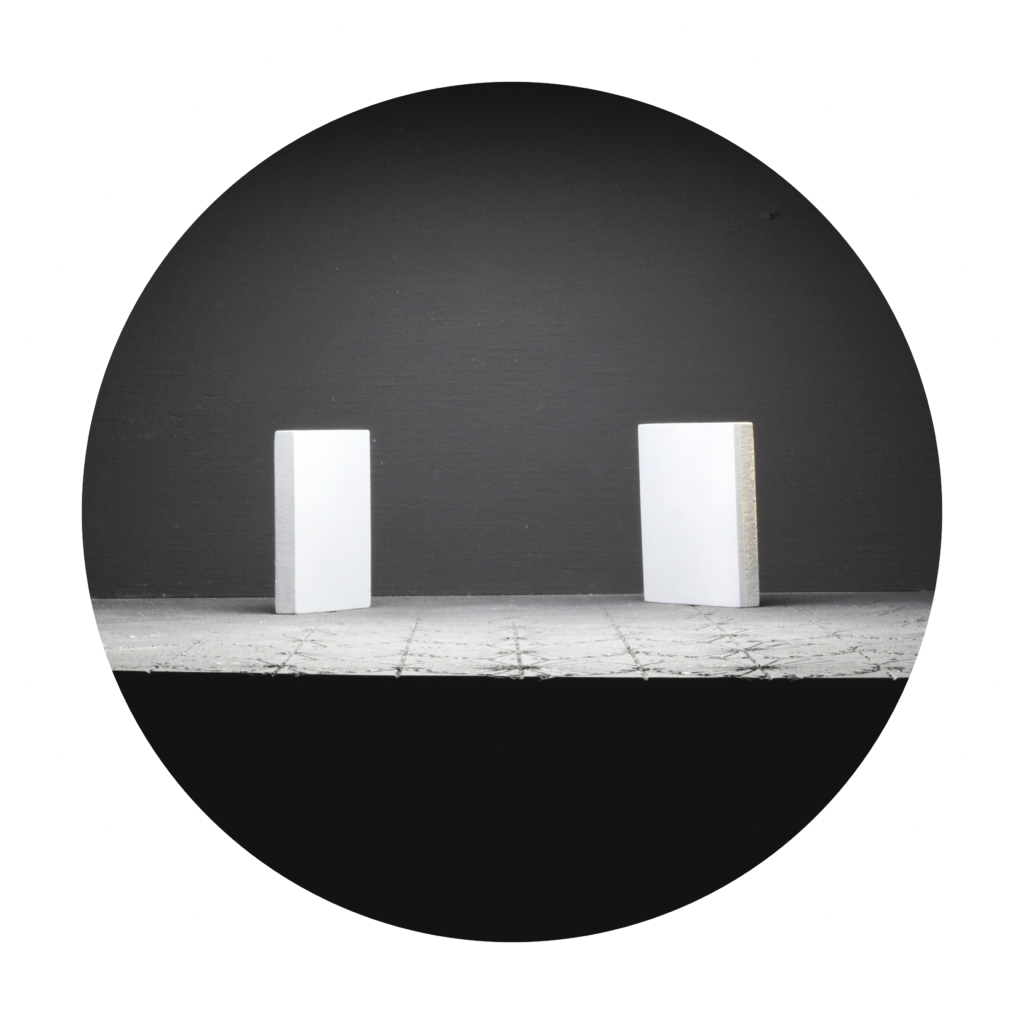
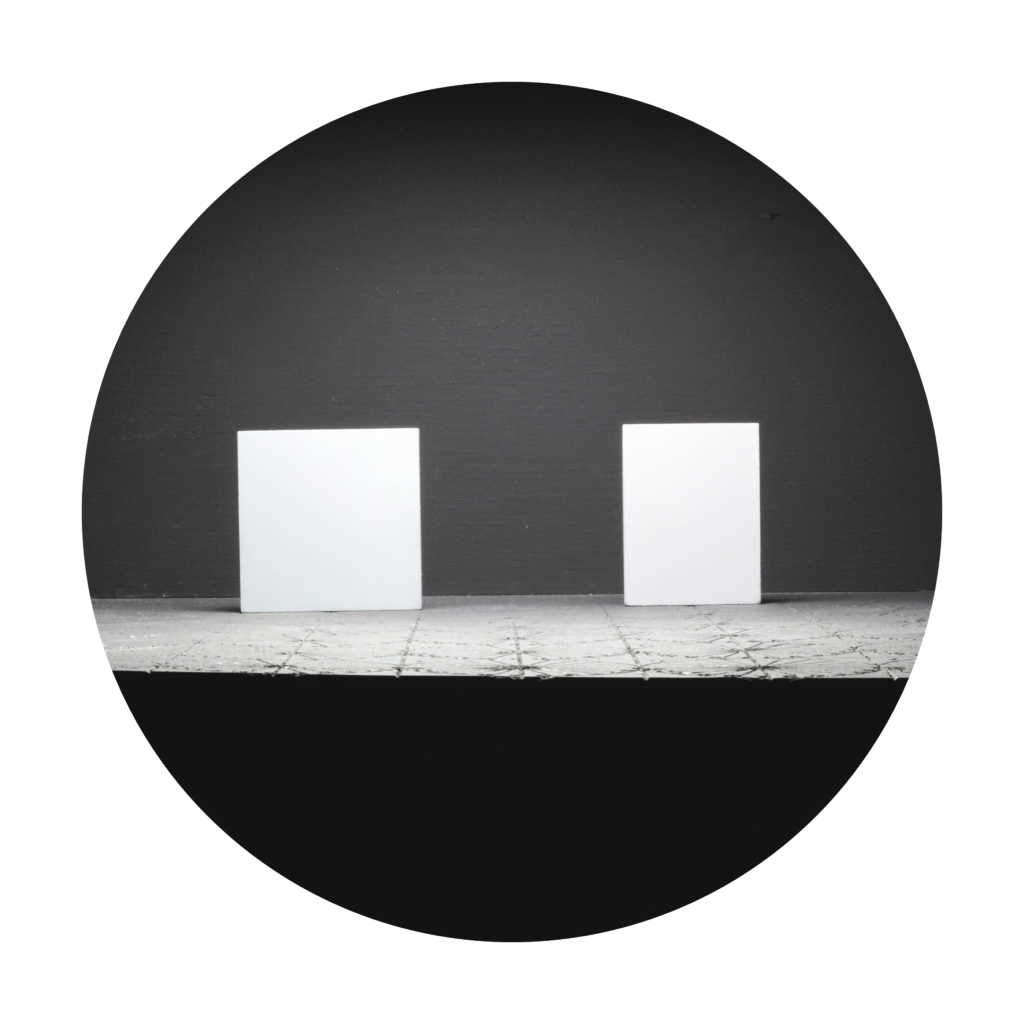

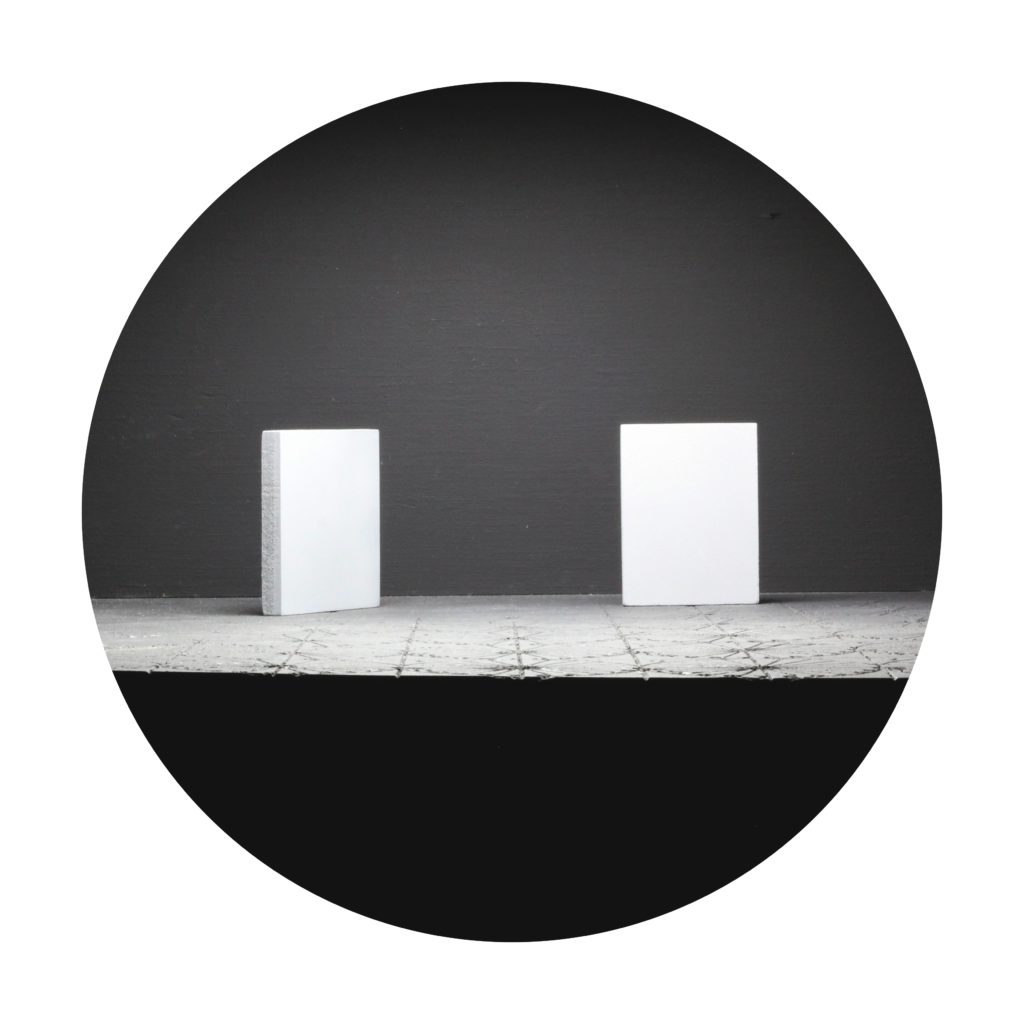
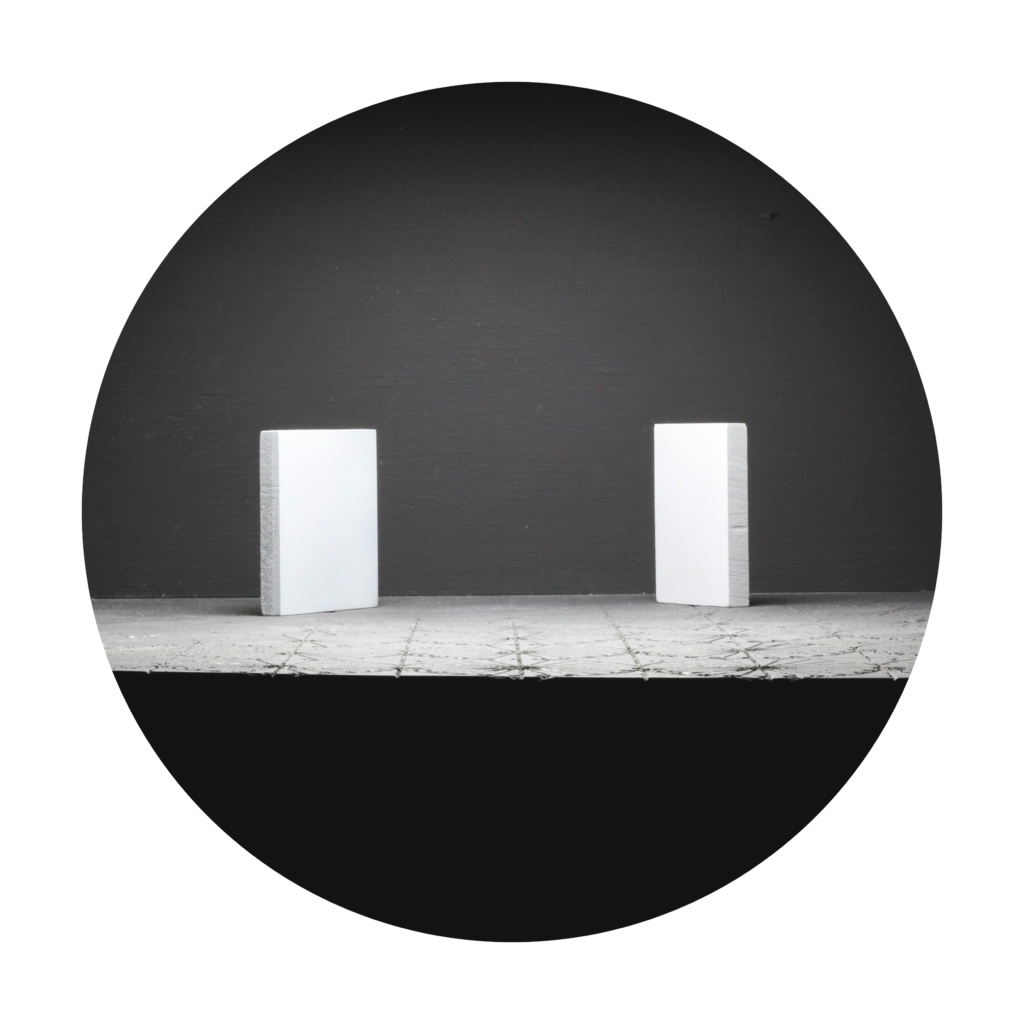
In the external approach the observer is stationary and external to the observed scene. In this approach, observers look into a small space in which pairs of pieces from Van der Laan’s morphotheek are arranged for discrimination. As a starting point, we concentrate on comparison of two dimensions of objects (their lengths and widths), which is why we only use the first layer of the morphotheek (called the “triangle of forms”). For example, we consider “slab” pieces of the morphotheek with proportions 3:4 and 4:7, which represent consecutive “types of size” in Van der Laan’s plastic number system.
To perform these comparisons, we built a variant of camera obscura. The device is a wooden box elevated by a supporting structure so that a seated observer could comfortably look into the box. On the observer’s side, the box is fitted with a sliding panel with a pinhole, allowing for either binocular or monocular viewing when the panel is, respectively, opened or closed. Inside the box, next to the wall opposite to observer, there is a stimulus shelf marked by a 7 7 grid (“stimulus grid”); each of the 49 locations in the grid affords 12 object orientations separated by a step of 15°.
To perform the experiment, the observer sits on an adjustable stool and looks into the box. Between trials, the view of the stimulus shelf is blocked by an electronically controlled shutter. For each trial, the experimenter places the stimuli (pairs of objects) on the stimulus shelf through a door on the side of the box. The objects are arranged on the shelf using the stimulus grid in accord with a predetermined list of conditions that specify object locations and orientations. Using the shutter, the experimenter exposes the stimuli for a short duration (1 second in current experiments).
External observation
Pilot | conditions
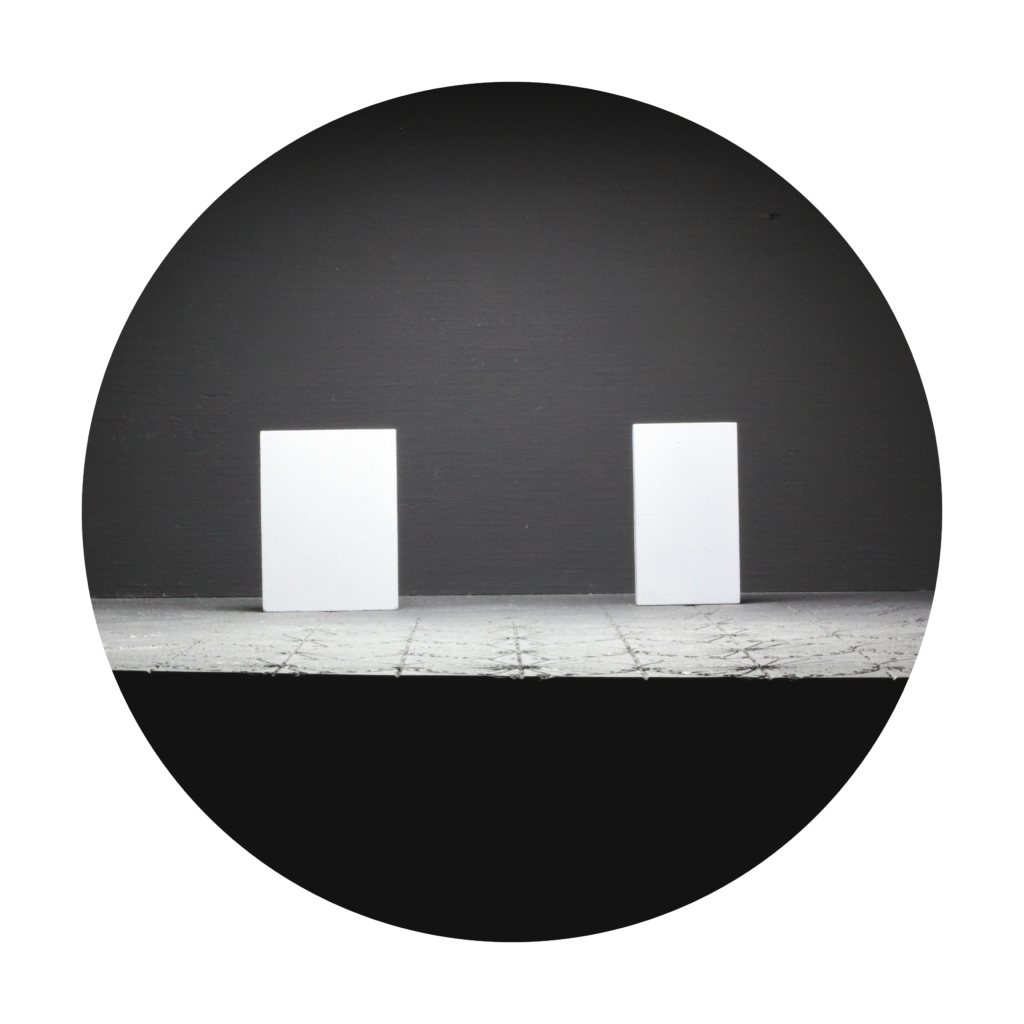
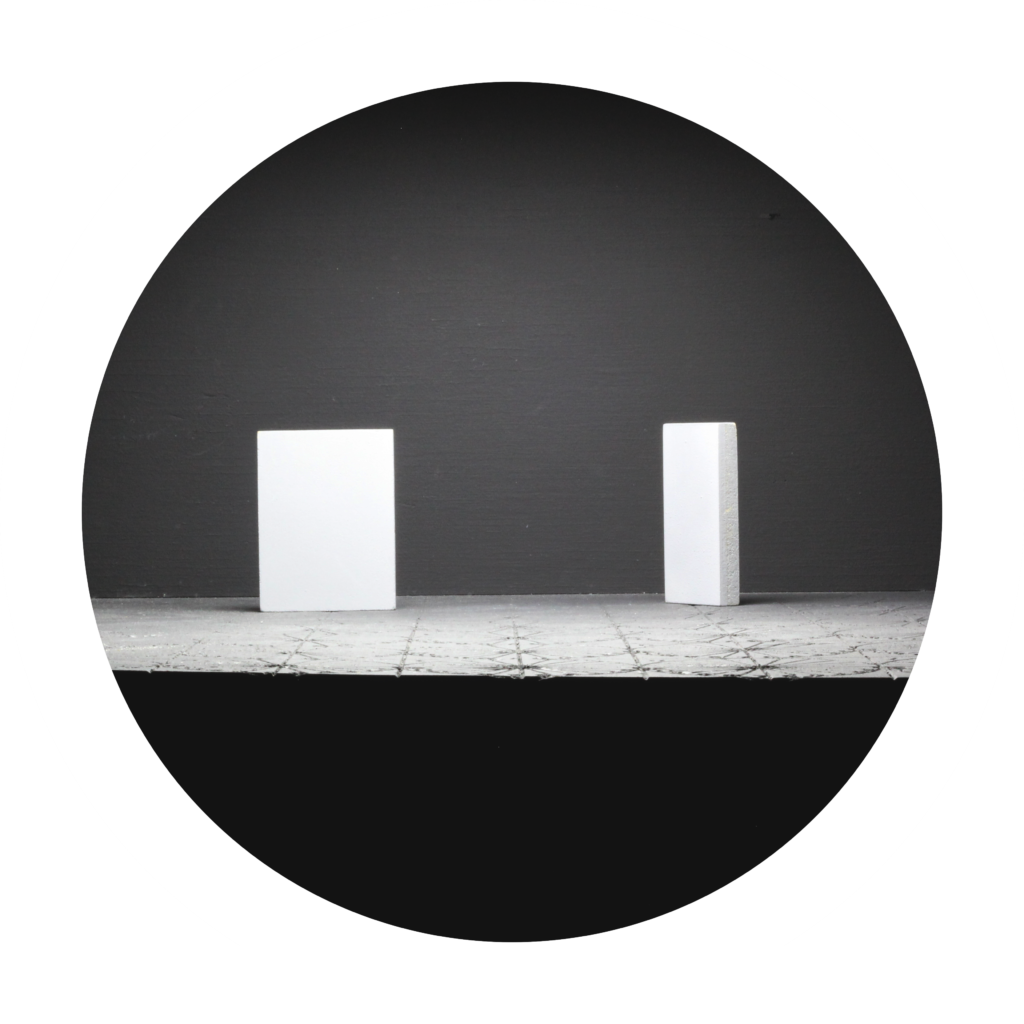
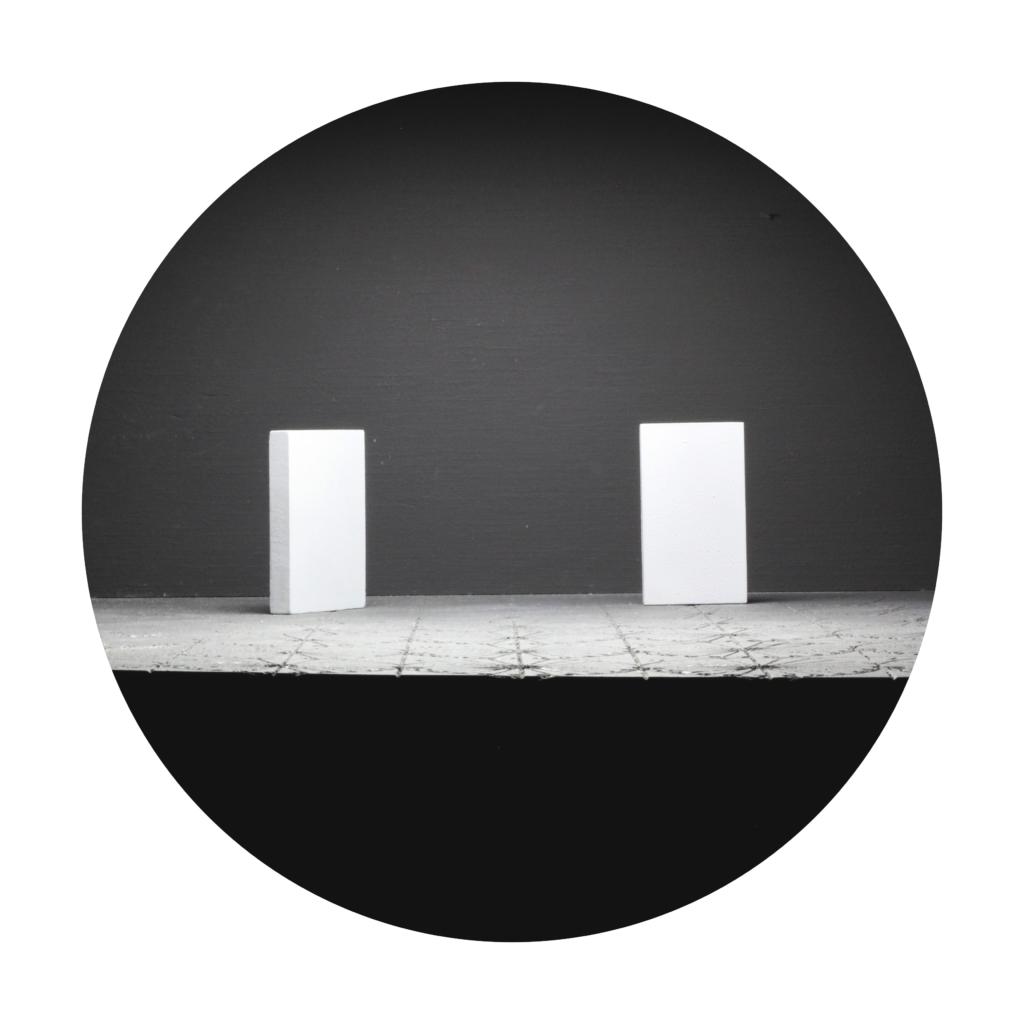
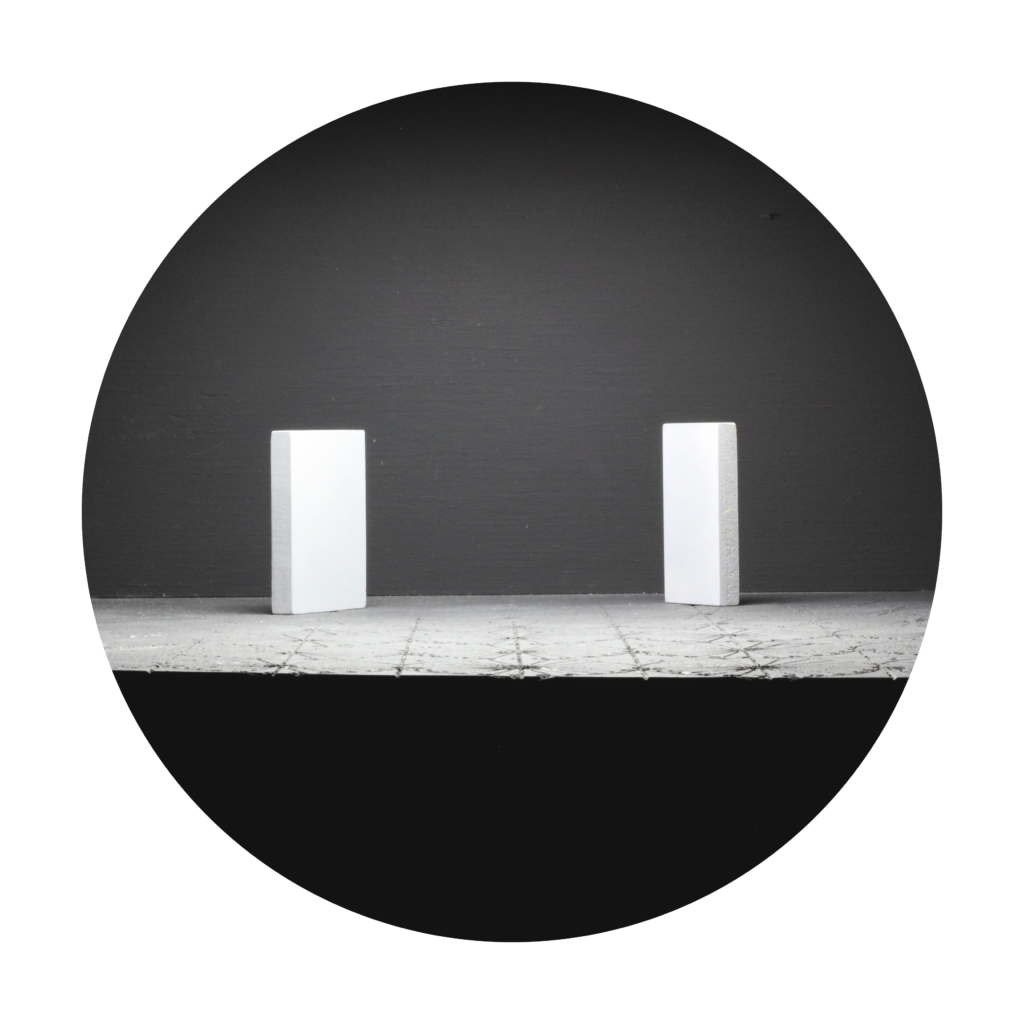
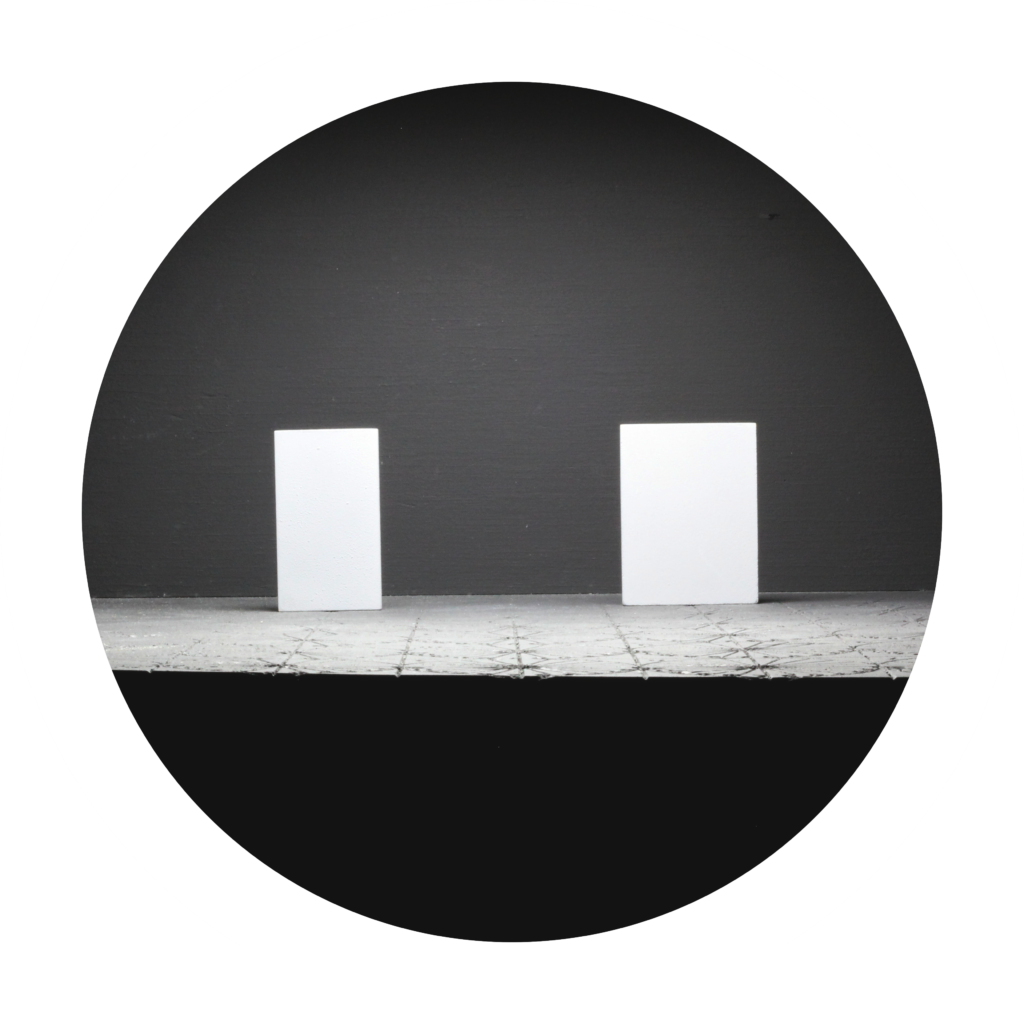
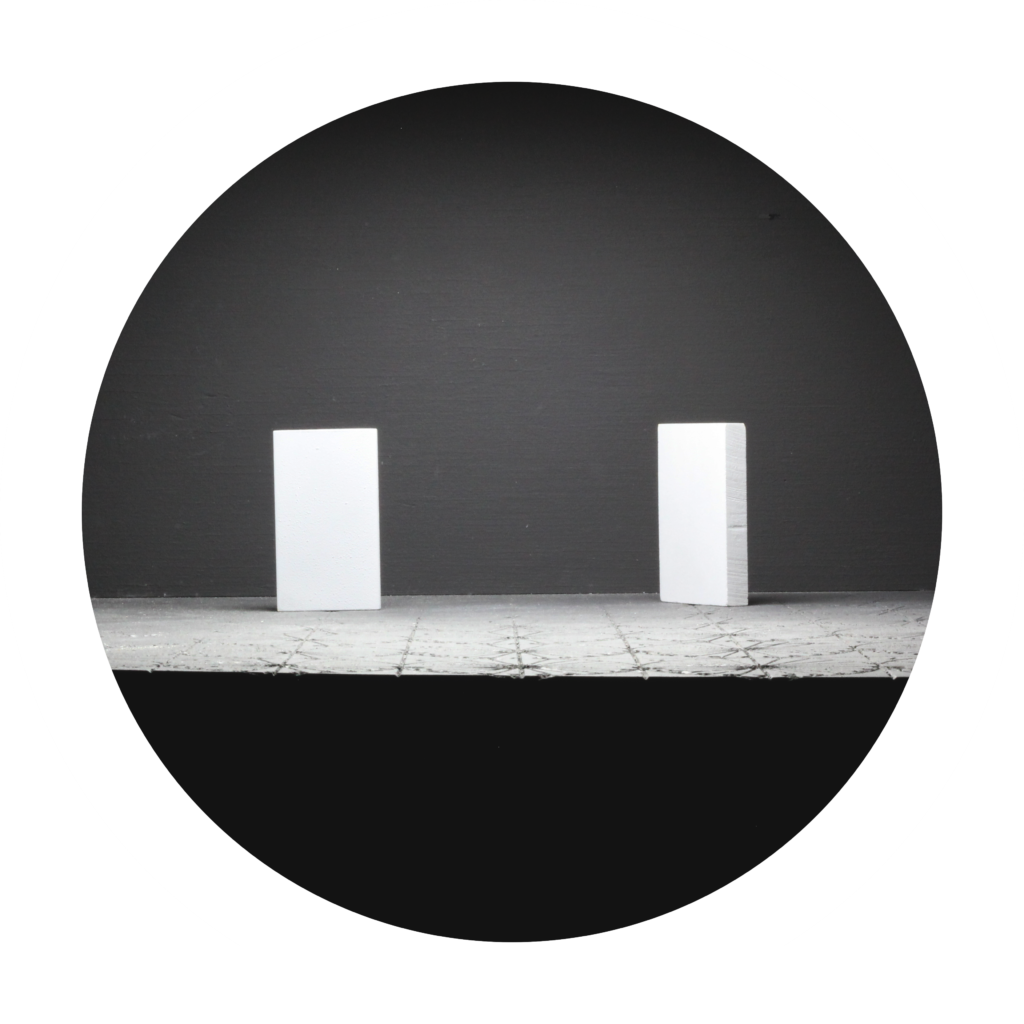
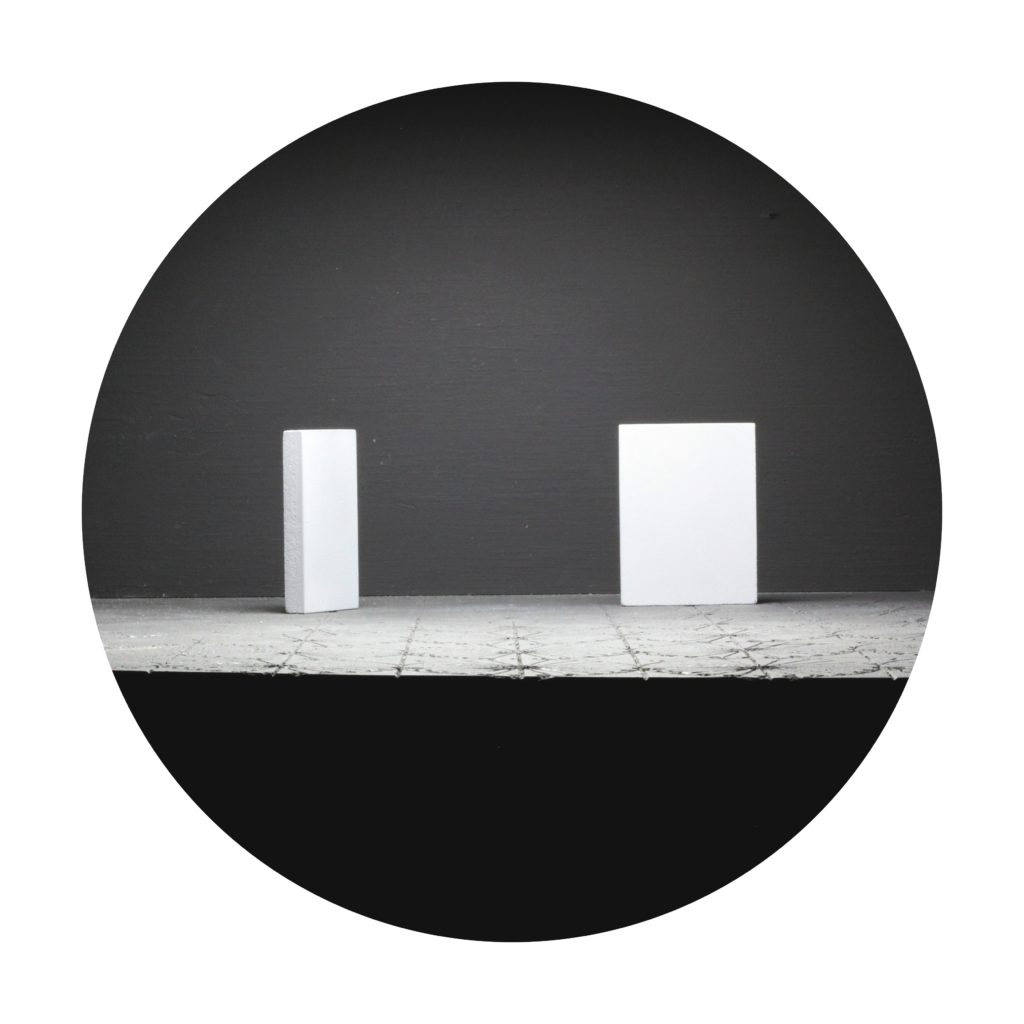
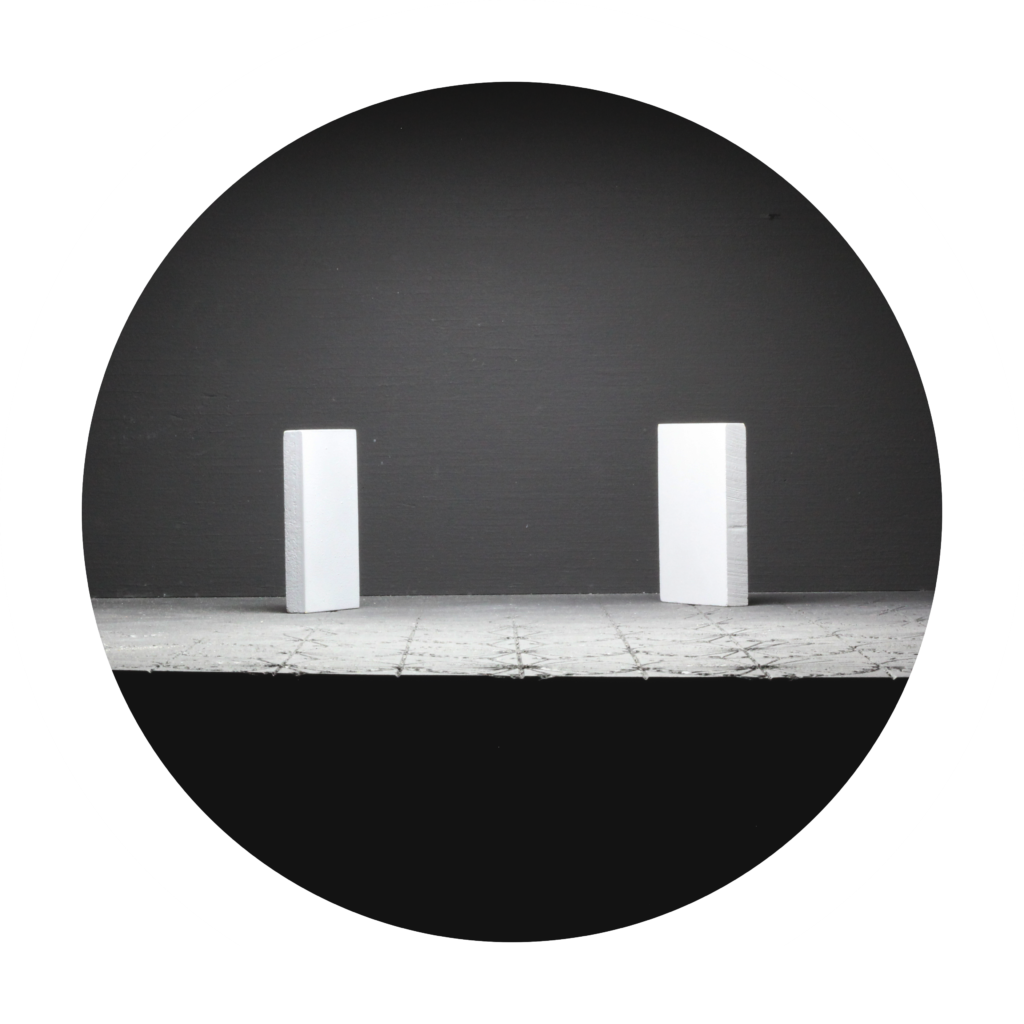








External Observation
In the external approach the observer is stationary and external to the observed scene. In this approach, observers look into a small space in which pairs of pieces from Van der Laan’s morphotheek are arranged for discrimination. As a starting point, we concentrate on comparison of two dimensions of objects (their lengths and widths), which is why we only use the first layer of the morphotheek (called the “triangle of forms”). For example, we consider “slab” pieces of the morphotheek with proportions 3:4 and 4:7, which represent consecutive “types of size” in Van der Laan’s plastic number system.
To perform these comparisons, we built a variant of camera obscura. The device is a wooden box elevated by a supporting structure so that a seated observer could comfortably look into the box. On the observer’s side, the box is fitted with a sliding panel with a pinhole, allowing for either binocular or monocular viewing when the panel is, respectively, opened or closed. Inside the box, next to the wall opposite to observer, there is a stimulus shelf marked by a 7 7 grid (“stimulus grid”); each of the 49 locations in the grid affords 12 object orientations separated by a step of 15°.
To perform the experiment, the observer sits on an adjustable stool and looks into the box. Between trials, the view of the stimulus shelf is blocked by an electronically controlled shutter. For each trial, the experimenter places the stimuli (pairs of objects) on the stimulus shelf through a door on the side of the box. The objects are arranged on the shelf using the stimulus grid in accord with a predetermined list of conditions that specify object locations and orientations. Using the shutter, the experimenter exposes the stimuli for a short duration (1 second in current experiments).







